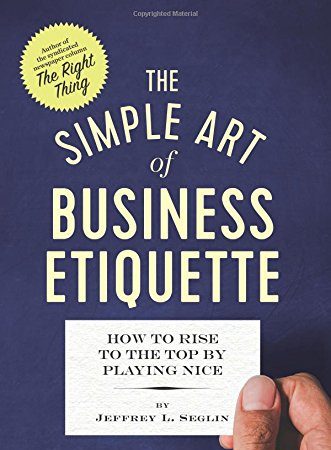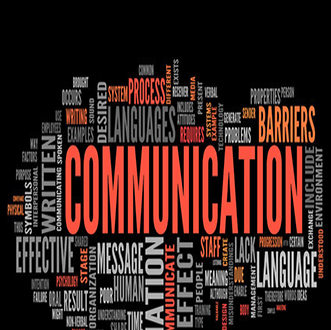
Business Etiquette = Success in the Work Field
What is Business Etiquette?
” Business etiquette is the subtle, redefining difference which enables people to excel and succeed in today’s corporate culture.”
➢ Presenting Yourself
➢ Good Manners
➢ Courteous to others
➢ Respect of others
➢ Being comfortable around others and making
➢ them comfortable around you
➢ No gender issue
WHY ETIQUETTES .. ?
Global workforce, International clients, Joint ventures Educated work force has redefined social & business etiquettes and manners of Indian business culture.
Appearances, attitudes and behaviors of employees has become direct reflections of company and brand.
Knowing how to conduct oneself with confidence and ease can determine whether one gets project, lands the contract or moves up the corporate ladder.
Thus it become essential for professionals to know the right things to do at corporate formal get together , lunches , dinners and social events.
Principles of Business Etiquette
• Be punctual
• Be discrete
• Appropriate attire
• Appropriate language
• Maintain a positive attitude
• Concern for others
• Strong work ethic
Forms Of Business Etiquette
• Meeting etiquette
• Wardrobe etiquette
• Travel etiquette
• Dinning etiquette
• Tipping etiquette
• Business cocktail party etiquette
Rules of Introduction
➢ One person is always introduced to another.
➢ Basic rules are:
1. A man is always introduced to a woman
2. A young person is always introduced to an older person
3. A less important person is always introduced to a more important person.
➢ Do not introduce people by first names only
➢ Display enthusiasm in introductions
Handshakes
• A handshake is firm and brief
• Accompanied by a direct look into the eyes of the person whose hand one is shaking
• Shaking hands occurs when introductions are made
• Men and women are equals today in the workforce so a woman should always extend her hand when meeting someone
• Same guidelines for introductions are used for shaking hands
• A handshake is appropriate upon meeting on a street, at a social function, or in a business setting
Conversation
• Conversation is an exchange of thought
• Heed these words: Stop, Look, Listen
• Limit use of “I”
• Include all people present in the conversation
• Practice active listening skills
• Read the paper so you know what’s going on, thus a basis for conversation with strangers
• A good way to encourage conversation with strangers at a table or party, is to ask advice
A Brief introduction to international protocol
It is important to note that etiquette in other cultures requires a bit of adaptation and flexibility. If you’re traveling on business to a foreign destination, or have visitors here, it is a good idea to learn as much as you can about the culture they are coming from and make appropriate allowances.
o Handling foreigners with ease
o Awareness of the common customs and social graces
o Subjects to be aware of but avoid discussing
o Discussing local customs appropriately
Social graces
• Art of small talk- when appropriate
• Introductions
• Ladies first
• Toasting
Dining
❖ When invited as a guest
❖ When you are the host
❖ Art of seating guests
❖ Art of ordering a meal or dish off the menu
❖ Table seating
❖ Wines
❖ Art of summoning a waitperson
❖ Art of tipping
❖ Thanking
Art of grooming
✓ Clothing and accessories suitable for different occasions- footwear , makeup, hair care, skin care.
✓ Colour palette
✓ Personal hygiene
✓ Dress for the occasion and the time of the day
✓ Finesse in grooming
Art of greeting
➢ Eye contact
➢ Style of greeting- a handshake, a namaste, a bow.
➢ Differentiating between ladies and gentleman
➢ Introducing oneself
➢ Introducing accompanying colleagues to clients and vice versa
➢ Addressing a client or customer
Electronic Communication
• E-mail is instant communication; it should not be lengthy
• It should follow the form of a word processed memo and professional
• It is not private or confidential; may be forwarded to others
• Do not use all CAPS; it is like shouting
• Do not forward or send chain messages
• E-mail has a group of symbols known as “emoticons”
Use of cell phones
• A timesaver for many people
• Reception may not be good due to background noise
• Turn off cell phones in meetings
• Talking on cell phone and doing another task may be distracting
• Others around can hear the user’s conversation
Telephone
✓ Identify yourself when you make a call and state your business
✓ Speak clearly and distinctly
✓ Answer phone with enthusiasm
✓ If you leave a number for a call back, speak the number slowly and repeat it twice
✓ Best way to answer a phone is still “Hello”
✓ Return calls quickly
✓ If you have voice mail, make sure that it is working properly
Non-verbal Communication
• Three steps of nonverbal communication: reading, evaluating, and controlling body signals
• Skepticism: arms crossed over chest
• Gestures of stress
• Nervousness
• Gestures of superiority
Dress and Image
✓ Follow dress code of company
✓ Wear what is flattering to you
✓ Wearing of jewelry
✓ Whole attire
✓ What is your image
Office Protocol
• Know how to organize
• Know chain of command
• Be familiar with the organization of company
• Efficiency
• Integrity
• Morality
• Responsibility
Business Meals
• Who?
• Where?
• When
• Type of business
• Table Manners
• Table Settings



